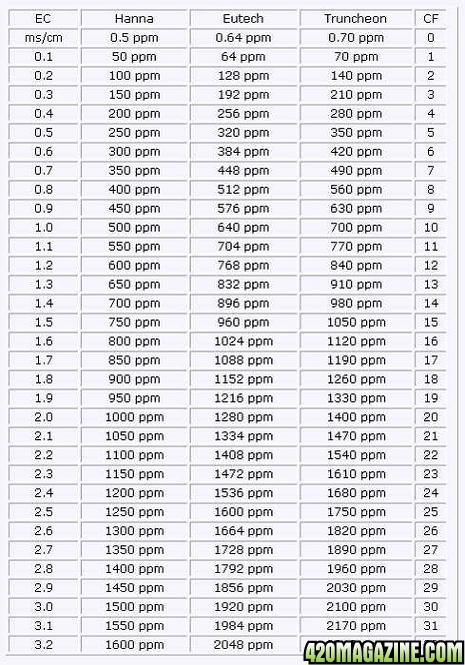Hi all,
I bought an EC meter a while ago (2 years ago or so), and have looked after it. Its from when I put together an NFT outdoor system for fruit and veg. Total waste of time as it turned out, though was still fun (ish).
Anyway, I spent ages last time finding out how to convert the reading on this meter. It is expressed in uS. A few hours ago I took a reading from my tap water (just to see), and it was 67uS, what does that mean? I have read that I should multiply by 1000 and divide by 2. This is supposed to give me the PPM.
This would mean I have a PPM in my tap water of 33,500. Which know for a fact is wrong (though it does have a whiff of chlorine, which I know will dissipate over a day or so).
When I eventually found the info on-line last time, the readings were similar, but that certainly wasn't the equation used. I remember it had something to do with 0.7 or 0.6 and some forumlae to calculate along those lines.
I've just spent two hours trying to find out, and I'm stuck, and in desperate need of a doobie, before I start throwing things around.
Anyone know of a conversion chart I can look at, or the formula to use? I see people talk in PPM and EC readings of 1.5 etc, but not this.
I bought an EC meter a while ago (2 years ago or so), and have looked after it. Its from when I put together an NFT outdoor system for fruit and veg. Total waste of time as it turned out, though was still fun (ish).
Anyway, I spent ages last time finding out how to convert the reading on this meter. It is expressed in uS. A few hours ago I took a reading from my tap water (just to see), and it was 67uS, what does that mean? I have read that I should multiply by 1000 and divide by 2. This is supposed to give me the PPM.
This would mean I have a PPM in my tap water of 33,500. Which know for a fact is wrong (though it does have a whiff of chlorine, which I know will dissipate over a day or so).
When I eventually found the info on-line last time, the readings were similar, but that certainly wasn't the equation used. I remember it had something to do with 0.7 or 0.6 and some forumlae to calculate along those lines.
I've just spent two hours trying to find out, and I'm stuck, and in desperate need of a doobie, before I start throwing things around.
Anyone know of a conversion chart I can look at, or the formula to use? I see people talk in PPM and EC readings of 1.5 etc, but not this.



 I think 1:1000 might be correct.
I think 1:1000 might be correct.
